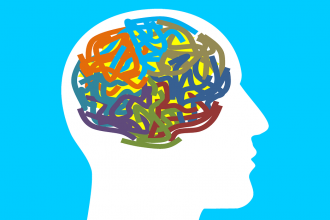To play Dungeons and Dragons, you do not need much: a few pencils, an odd-looking set of dice, a group of friends, and most importantly, an unbounded imagination. At its most complex, it is a game of strategy and chance, operating by an elaborate set of rules and characters. Distilled to its simplest form, it is a group of friends gathering to tell a story.
Players take on characters with diverse traits, ranging from elves and paladins to courageous knights and wizards, each complete with their own backstories and personalities. They are guided by the Dungeon Master, the person who crafts the adventure and lays out incentives or obstacles for players to overcome in pursuit of their mission. Hand-drawn maps guide their imagination and sacks of dice determine their fates. Its simplicity is its strength, a chance for anyone to exchange their mundane life for one of adventure and high stakes—to be on a quest to defeat a rising cult, or perhaps an orc that has rampaged the city—all in the unseemly space of one’s living room.
When first introduced in the 1980s, an age where video game graphics were dominated by two-dimensional pixelated images in dark arcades, D&D rose in popularity by widening the scope of adventure. Instead of climbing a rung of finite levels, the game of D&D offered a spiralling mission, attached always with the allure of uncertainty, and a world that felt more real. Wizards of the Coast, the creators of the game, shared that 2018 was the fifth consecutive year of D&D’s double-digit growth.
…why are people reaching towards an intangible adventure with no bells and whistles, lived out exclusively in one’s imagination?
In our age of advanced technology, however, why has D&D risen again in popularity? Critical Role, the online series where voiceover actors broadcast their campaigns, boasts millions of views on each episode, and the game’s manual books are continuously topping bestseller lists. Why has D&D once again captured our attention? When games like Assassin’s Creed: Odyssey offer an almost perfect simulation of the ancient Greek landscape, and Elite Dangerous lets players explore a 1:1 scale representation of the Milky Way, why are people reaching towards an intangible adventure with no bells and whistles, lived out exclusively in one’s imagination?
In the past few decades, virtual graphics have adopted the goal of perfection. Graphic designers wish to create graphics and simulations that are perfect to the extent of being inseparable from reality. Even with the present quality of our computer graphics, we can sit in front of a video-game monitor and feel hours later as if we have undergone a tangible, reaI-life experience. Receiving shiny red alerts that spill onto our phone screens can feel as if we’ve engaged in true social interaction. Indeed, the more time we spend and accept the virtual world, the more and more it is becoming our reality.
As alluring as flawless graphics may be, there seems to be something tremendously boring about the virtual world.
Is this kind of interaction, however, truly what we want? Do we like exploring virtual worlds that look exactly like our own? Do we want to live solely in a simulated reality? As alluring as flawless graphics may be, there seems to be something tremendously boring about the virtual world. We are averse to perfection. We are being captivated by older technologies, editing grain into our Instagram photos and rediscovering cassette tapes. There is something pleasant about hearing the crackling, distorted sounds of vinyl, or seeing an intimate moment captured in an unpolished, blurry photograph. As Brian Eno writes in A Year with Swollen Appendices, “The blues singer with the cracked voice is the sound of an emotional cry too powerful for the throat that releases it. The excitement of grainy film, of bleached-out black and white, is the excitement of witnessing events too momentous for the medium assigned to it.” Flaws remind us of our own wonderful existences. We aren’t letting ourselves fade into technology, and the reason for these shifts is not just nostalgia.
As infinite as the virtual world may seem, it is also inescapably finite. When a video game presents you with something on par with reality, our own imaginations are stifled. When there is a set of predetermined outcomes, other imagined possibilities cannot endure. We forget, however, that despite how alluring virtual graphics may be, ideas fermented and grown by our own imaginations have the potential to be even more inventive than what video-game designers can conjure. This may be why when we fall in love with a story on paper, its filmic adaptation always seems to fall short of our expectations. In a 2006 interview, Gary Gygax, the co-creator of D&D, said, “It reminds me of one time….I asked one little boy why he preferred radio over television, and he said, ‘Because the pictures are so much better’.”
Each time, players have the chance to return to a new game, something which video-games and their algorithms can’t offer.
Thus, while technology presents us with an impressive image, D&D gives us our own agency. With nothing but description dictating the adventure, players must create their own vibrant imagery. They are free to shape the campaign with their spiralling imaginations, each idea sparking another. Just as in real life, anything can happen. Each time, players have the chance to return to a new game, something which video-games and their algorithms can’t offer. There is intimacy and a profound sense of discovery! The story is crafted in live time, and the only way to determine the ending is to keep playing.
D&D is a chance to escape the restricting nature of technology, and it also offers a rare sense of stability in a politically turbulent time. With a changing climate, tensions between countries, and eroding faith in our world leaders, it seems that our world faces a never-ending stream of challenges. In times like these, weekly meetings with a group of friends can be precious.
The game has entered the realm of church ministries, schools, and even corporate work environments. Daniel London, a professional Dungeon Master, said, “I have lawyers, doctors, mechanics, janitors, the whole spectrum comes into play games.” In a New York Times article describing the game’s meteoric growth, the public expresses their teeming adoration, calling D&D “a small taste of freedom” and “soothing.” One comments, “It feels good to have unity in the divided times we’re living in.”
When the evil and prejudices of the real world are difficult to defeat, conquering trolls and mind-flayers can instill a shared sense of hope: the sense that our own world will be okay too.
In many ways, D&D is more than just a game. It is a source of social connection and reassurance in a chaotic world. A digital landscape that does not cease to grow satisfies what we’ve been craving: individuality, intimacy, and a small, yet reassuring, dose of stability.









I play a lot D&D and I can attest that it’s so much more than just a game. My best friendships were based on meeting people from other D&D parties. Well said article. I know for sure it will continue to grow on and on.